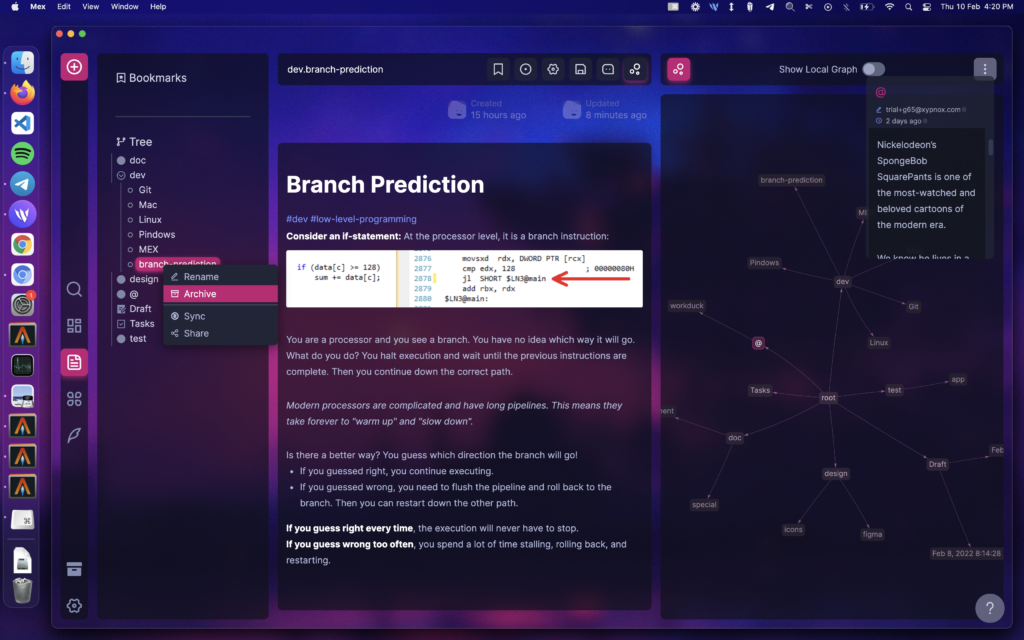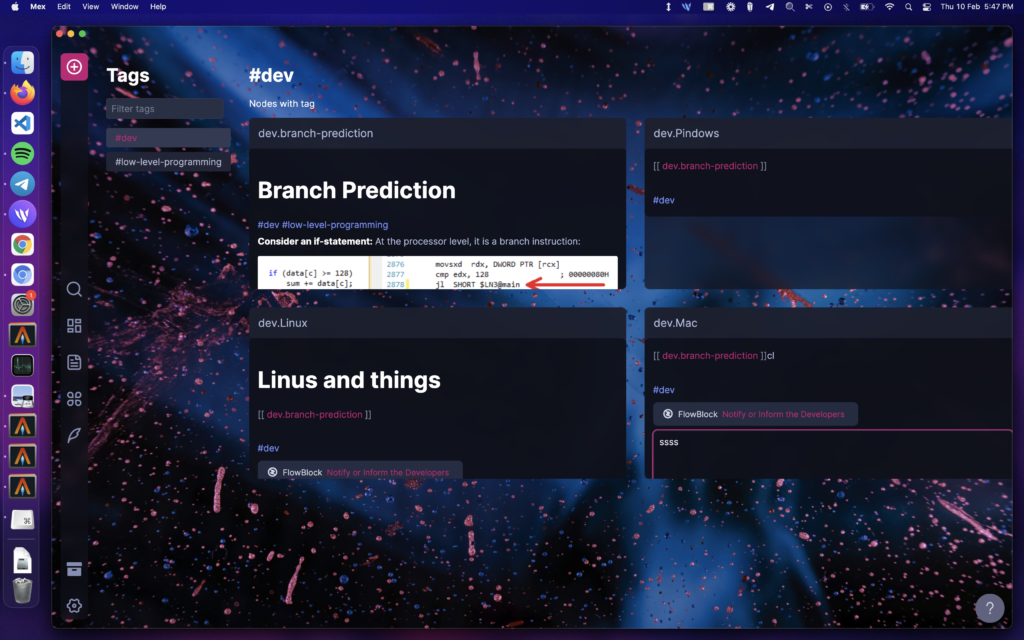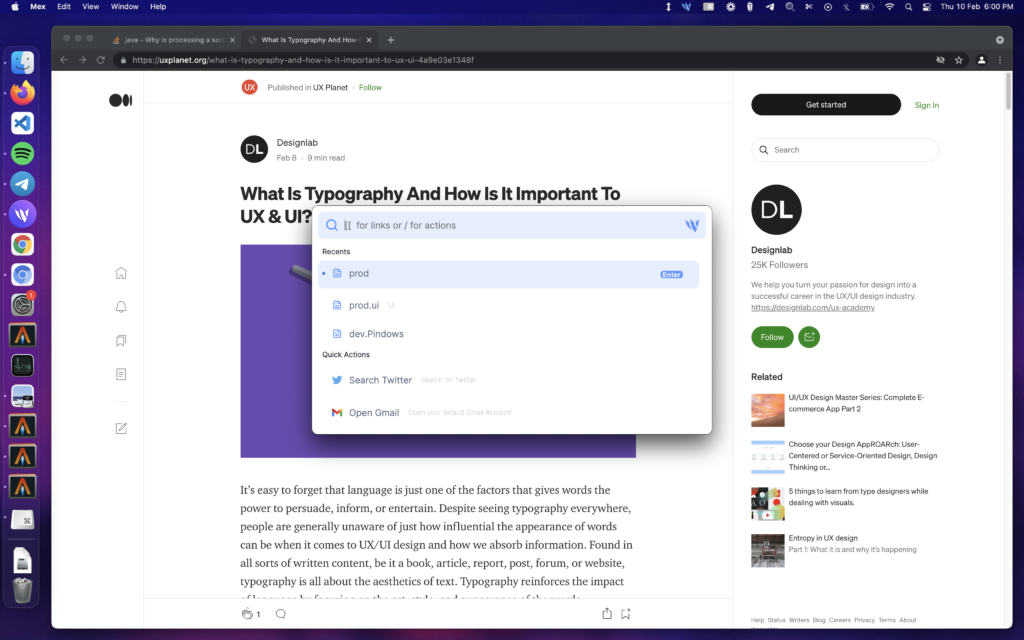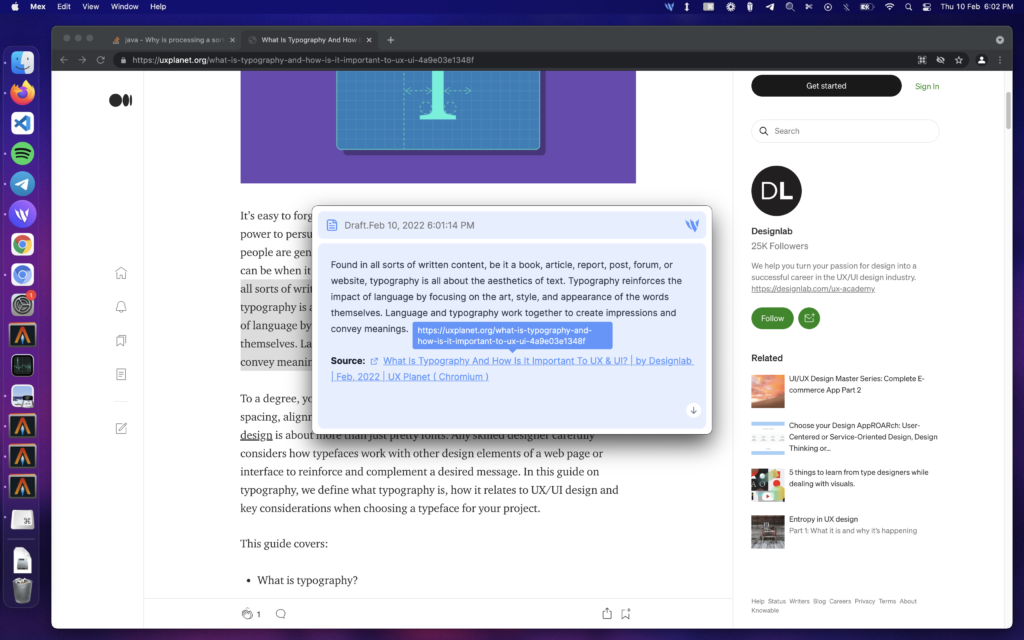Welcome to this edition of our Tools for Thought series, where we interview founders on a mission to help us become more productive and more creative without sacrificing our mental health. Rishank Pandey is the co-founder of Workduck, a self-organizing work hub for modern product teams. Workduck helps you automate your tasks and augment your work so you can focus on what really matters: building great products.
In this interview, we talked about the networked nature of product work, the difference between discovery work and delivery work, how to unlock serendipity in the product development process, accessing tacit team knowledge, the principles of building a modern agile workplace, and much more. Enjoy the read!
Hi Rishank, thank you so much for agreeing to this interview. Let’s face it: building a product can be incredibly stressful — can you describe some of the challenges commonly faced by product teams?
Thanks a lot for the opportunity! That’s a deceptively simple but great question. The core problem is information overload. On average, a software team uses 106 different SaaS tools, a problem that some call “SaaS sprawl” — and that has been exacerbated by remote work.
This results in tons of work metadata that’s spread haphazardly across sheets, emails, people’s brains, issue tickets, chat threads — all of this is hard to find and nearly impossible to keep in sync.
Product work is highly networked and has lots of interconnected moving parts. What doesn’t help further is that there are currently almost no tools to help augment product-building workflows.
For example, let’s say a product manager wants to keep their launch checklist updated, following some key insights derived from user research or feedback which itself is scattered across Slack threads, customer support tickets, and forums. Traditional automation tools built for sequential processes don’t cut it for such iterative and dynamic processes which are getting more intertwined by the day.
So, a large part of a product person’s day is spent searching for information, attending additional meetings for context sharing, logging information into multiple tools, and the list goes on. These folks spend almost one third of their time looking for or recreating information that already exists!
As you can see, product work largely consists of “discovery work” and “delivery work” — while delivery work has historically been the center of attention, tools that support discovery work and help to link the two together is where there is a huge void today.
At Workduck, we think that writing is the way to most clearly bridge this gap. After all, every action that you perform can actually be expressed as a Note! And Words are the most persistent data structures!
Continuously re-reading what you have written and editing it for better accuracy for as long as that piece is relevant to your team — even if it’s in months or years — is powerful, but sadly no platform promotes such behavior.
Shared knowledge bases quickly become stale or irrelevant if they are not updated and connected to new ideas. This leads to the company depending on a few stakeholders to document all the relevant information the team needs. A good proxy to understand the scale of this problem is to look at the rise of ResearchOps and ProductOps roles who maintain this central source of truth for product teams.
That’s fascinating. How is Workduck addressing those challenges?
If I ask you to picture a productive person, what image springs into your mind? Probably someone who is waking up very early, a hacker who is gulping down vitamin shakes for breakfast and hustling all week long? The overarching problem that needs to be addressed to solve these broken product workflows is to work on changing this perception.
At Workduck, we feel that the new productivity metric is not just time. Instead, empowered product teams — the ones who would strongly hate the term “feature factory” — rely on another productivity metric: “time to insight”, which entails smartly augmenting your present work and automating your common repetitive tasks across tools that traditionally have not talked to each other.
The cornerstone to achieving this is unlocking serendipity in your work by consolidating all your knowledge that’s scattered and fragmented, and putting it to work for you. This quote by the ex-CEO of Hewlett-Packard, Lew Platt, is a good summary of what our vision is: “If HP knew what HP knows, we would be three times more productive.”
Love this HP quote. More specifically, what are some of Workduck’s most unique features?
Our guiding light is slightly contrarian. We feel your work should be independent of the tools you use as part of your “backend”, and we want to be the “middleware” that promotes this. After all, we are in the business of selling speed and digital fulfillment.
Think of us as an embedded assistant in your workflow, something that’s at the back so you can be in your deep state of work — or “flow” — while we automate away all the complexities in the background.
The less time you spend on our platform while we help augment your work, the more successful we get as a platform. So what does this translate to in terms of user journey?
First, Workduck is keyboard optimized. We’ve designed it to help you work at the speed of thought. You press a key and the work gets done. That’s it.
Then, we surface relevant insights. Haven’t we all secretly wanted the power of Google Photos but for our personal and professional knowledge? With Workduck, we get a step closer to that. For instance, you can get insights and additional context right when you’re in a stream of consciousness looking at an artifact that other members of your team might have shared a while ago.
Finally, Workduck is bringing code like reusability to your workflows. We link artifacts together, sync data across tools together, and allow you to share these just like you share your notes. You can also experience the power of backlinks across your tools and daily workflows. It’s that simple.
Personally, what’s your favorite feature?
That would be quick capture, by a mile. You can essentially call a keyboard shortcut to smartly “capture” a piece of content from anywhere you are, whether it’s Gmail, Slack, Figma, Twitter, etc. and either turn it into a backlink, perform an action (like sending it to a particular tool, seeing related ideas and insights, adding context) or integrate it into a pre-built contextual workflow.
This feature comes in very handy everyday when I’m in research mode.
In the grander scheme of things, modern product work is largely defined by how fast you can get to qualitative insights or what might be more commonly referred to as “continuous discovery” work, and that’s where our quick capture feature shines.
You are building Workduck for the “modern agile workplace”, what does that mean?
To be agile means being able to ship fast and learn iteratively. It’s a topic that’s been part of public discourse since ages. But if one had to sum up the essence of an “agile workplace” across the different frameworks, debates and discussions, it is one that promotes constant experimentations and the need to periodically learn, unlearn and relearn everything.
In principle, doing this has never been easier than today. But, ironically, it has become much harder to put into practice. That’s primarily because it’s very easy to zoom so much into iterative processes that you start to perceive events as linear in nature, losing out on its intertwined essence.
Our brains, our interests, our potential and the project we work on have never been single-threaded nor confined to one unique stream of actions. Everything is networked. A modern agile workplace is one that promotes cross-functional collaboration in such a networked environment.
A lot has been written and is being written on what this would entail process-wise.
But sometimes it’s not so much about the very explicit things as much as the subtle, implicit things ingrained in every team in an org that creates the main difference.
Similarly, the solutions to making a team agile should not be defined by fixed processes, but rather as a series of checklists on how to make every function or role feel equally empowered within a team and make knowledge transfer among these as seamless as possible.
Concise and updated documentation, being open to rapid experimentation, and knowing the difference between data-driven and data-dependent decisions are some of the key defining characteristics you’ll find in a modern agile workplace. The culmination of that is shipping delightful products truly fast.
Talking about quickly shipping delightful products, Workduck is a big proponent of the low-code and no-code movement — why do you believe this is the future?
This question reminds me of this one time Steve Jobs was asked about Visual Basic and the future of low-code applications in the Apple Developer Conference in 1997 and he responded saying: “The way you increase programmer productivity is not by increasing the lines of code per programmer per day — that doesn’t work. The way you increase programmer productivity is by eliminating the lines of code you have to write. The line of code that is the fastest to write, that never breaks, that doesn’t need maintenance is the line of code you never had to write. The goal is to eliminate 80% of the code that you have to write for your app.”
So the discussions and buzz around low-code and no-code are not new. But recently there have been two macro-trends coming together that make us excited about low-code and no-code tools, and especially their applications in product workflows.
Traditionally, no-code and low-code tools used to exist in silos to code-based and more intensive product development tools. This meant that as the actual use cases for them became more complex — which is to be expected as teams and their processes grow — the tool won’t be able to grow with it. Either teams would end up switching to building a tool from scratch or bring in automation experts to duct tape processes and tools together.
This is exactly where low-code and no-code tools can shine. For example, people have been creating internal tooling and deploying production-ready apps built on top of Google Sheets.
And recent low-code and no-code tools are also looking to seep into existing Dev workflows, some even promising to blur the lines between “code” and “no-code” — all of this is leading people to adopt low-code and no-code tools faster and to embed them in their daily workflows.
In addition, fast releases and constant experimentation are fast becoming the norm for product-led growth. The need to automate common repetitive tasks and to get to insights faster has never been more evident. But you can’t keep on scripting solutions together, so the need to resort to low-code and no-code tools has been increasing. This opens up new, faster, and more creative ways to collaborate and work together.
What kind of people use Workduck?
Workduck is built for teams of two to twenty-thousand people. We want the tool to grow as your team and processes grow, so being infinitely flexible is baked into the product. More importantly, people who have the “maker DNA” are involved in regular context switching and have to jump around tools to get their work done — these are the people we think would find Workduck to be the most helpful.
A user once remarked that Workduck makes them feel like this is their “work API” in that they can quickly capture stuff from anywhere, deeply link their artifacts together and get an automated output. I like to use this as a snippet to share the powers of Workduck and the kind of work that can be achieved by using it.
What advice would you give to someone who is just starting as a product manager?
Product management is an exacting job. It is very easy for a new PM to get lost in the myriad of requests, follow-up queries, and meetings. At the end of the day, you can end up feeling like you have not accomplished much.
Our advice to new PMs is to block at least 15% of your time on a weekly basis for yourself. You can use that time to mull over the big picture, try solving difficult problems that you never had time before or simply look back at what you have accomplished. These activities are so energizing that it gives all the fuel required to march forward and keep a balance.
Another important advice we keep giving to PMs is to find a mentor as early as possible in their career. Despite studies showing that having a mentor accelerates one’s career very significantly, only one third of employees go for a mentor even in firms that offer a formal mentorship program. This needs to change.
What’s next for Workduck?
We strongly feel that modern work has become synonymous with neurotic levels of obsession with time and at points unnecessary toxic hustle culture. We want modern work to focus on personal fulfillment and deep work. Our goal is to build a platform that allows users to consistently experience a flow state and to share that experience with others.
In the short term, we are in the middle of our Design Partner Program with a few high-velocity teams at Netflix, Meta, Darwinbox and more, and we have had an NPS over 60 for the last quarter now. Without revealing too much, this basically means we should be coming out of our semi-stealth mode soon and you will be hearing a lot more from us now!
Thank you so much for your time, Rishank, especially just before coming out of your semi-stealth mode! Where can people learn more about Workduck and give it a try?
You can sign up for early access on our website and follow our journey on Twitter at @workduckio or on LinkedIn. We also write about the future of product development on Medium.




